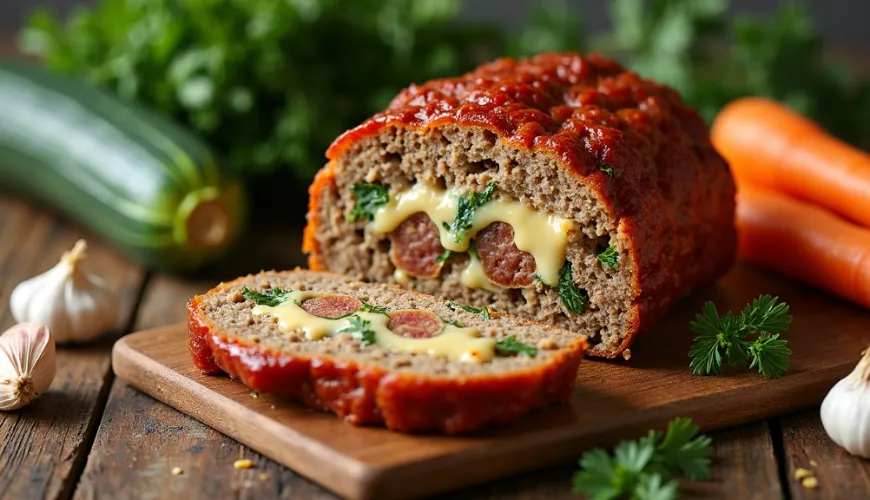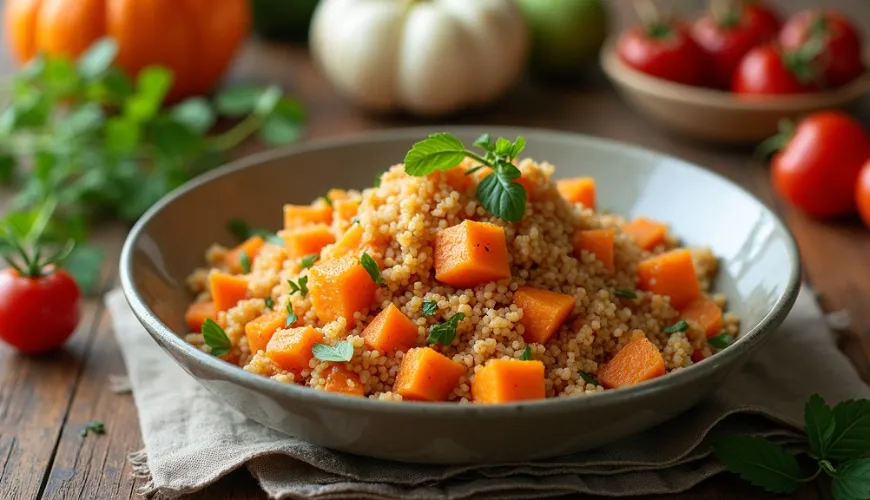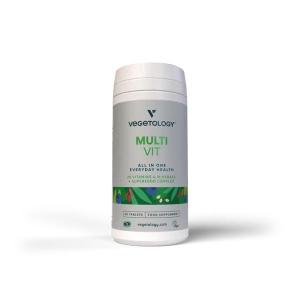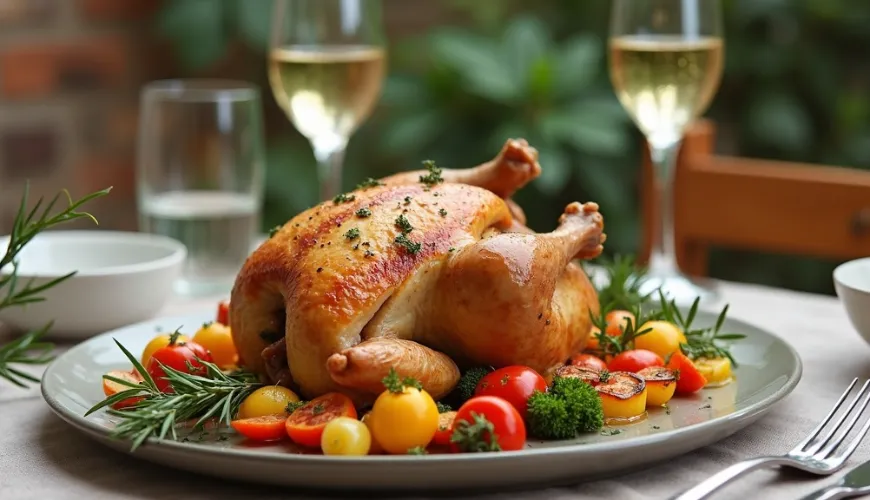
Discover the Magic of Granadýr - A Childhood Dish That Never Disappoints

Granadýr - A Forgotten Classic Worth Returning to Our Plates
Meals that evoke the aroma of home, childhood, and simplicity hold a special place in Czech cuisine. Among these is granadýrský pochod—a dish that was once common on tables but has somewhat faded amid the flood of modern recipes and exotic flavors. Yet granadýr, also known as granadýrský pochod or simply granadýr, has everything one might wish for from homemade cuisine: it's simple, affordable, filling, and surprisingly flavorful. Although it may initially appear as a "plain mix of pasta and potatoes," when prepared correctly, it can pleasantly surprise even the more discerning palates.
What is Granadýr and Where Does It Come From?
Granadýr is a traditional dish of Central European cuisine, especially found in Czech, Slovak, and Hungarian gastronomy. Its base consists of potatoes, pasta, onions, and ground sweet paprika, making it an ideal dish for using leftovers or for days when one desires something warm and filling for a few crowns. The name "granadýrský pochod" refers to its military origins—allegedly a meal prepared for soldiers on the march because it was quick, simple, and could satisfy even in demanding conditions.
Interestingly, granadýr looks slightly different in various regions. Some add garlic, others include cracklings, smoked meat, or sauerkraut. However, the basic version is always vegetarian, making it an ideal dish for those looking to reduce meat consumption or seeking cheaper plant-based alternatives.
A Recipe Every Grandmother Knows
The good news? The granadýr recipe is no rocket science. The bad news? Perhaps it's too simple for modern chefs to pay attention to. But its charm lies precisely in its simplicity. When quality ingredients are used—farm potatoes, homemade pasta, flavorful onions, and fragrant paprika—the result is a dish that not only fills but also delights.
Preparation begins with frying onions in oil until they are slightly caramelized. Ground paprika is added (preferably Hungarian, with its strong taste and color), followed by cooked pasta and potatoes cut into cubes. Everything is mixed, optionally seasoned with salt and pepper, and left on the pan to "combine." The result is a slightly sticky mixture that smells wonderfully of onions and paprika.
In some families, granadýr is served with pickles, in others with buttermilk or kefir. These small variations make granadýr a dish that everyone can customize to their taste.
Granadýr as a Symbol of Sustainable Cuisine
In times when sustainability, food waste, and a return to natural ingredients are increasingly discussed, granadýr is a textbook example of how to cook ecologically and with respect for nature. It requires no exotic ingredients, produces no unnecessary waste, and can be easily made from what most people already have in their pantry.
Moreover, it's a dish that excellently utilizes leftovers. Do you have cooked potatoes from yesterday? Leftover pasta no one finished? Onions and paprika are almost always in the kitchen. In such a moment, a few minutes on the pan result in a warm, tasty, and nutritious lunch or dinner. And that's how an ecological household in practice looks like—without waste, unnecessary stress, or the need to continually purchase new ingredients.
Why Is It Worth Bringing Granadýr Back to Your Menu?
Apart from environmental advantages, granadýr also has nutritional benefits. With its combination of starchy foods, it provides long-lasting satiety without burdening the body with excessive fats or simple sugars. When prepared with whole grain pasta and served with a vegetable salad, it can be a complete and balanced meal suitable for children, seniors, or athletes.
Additionally, it has enormous potential to become "comfort food"—a meal one turns to on a tough day, when tired or in need of a soul-soothing dish. Anyone who has once tasted granadýr fragrant with onions and paprika knows that this dish has soul. And such dishes should be supported in the kitchen now more than ever.
A mother from Znojmo described how granadýr saves her evenings: "When we come home late and the kids whine that they're hungry, I turn to granadýr. I always have cooked potatoes ready, pasta is done in ten minutes, and onions and paprika are basics. Not only is dinner quickly prepared, but it always disappears from the plate first."
How to Enhance and Modernize Granadýr?
Although the classic recipe is excellent on its own, it may be too simple or bland for some. Fortunately, there are plenty of ways to "tune" granadýr without losing its original character. Instead of regular pasta, one can use buckwheat or spelt pasta, adding more fiber and nutrients to the dish. Potatoes can be replaced with sweet potatoes for a slightly sweet taste and a higher content of vitamin A.
Try our natural products
For protein lovers, chickpeas, lentils, or sautéed tempeh can be added. And if granadýr is to be richer, mixing in sauerkraut can not only enhance the taste but also support digestion. Fried onions on top or a spoonful of sour cream can add additional layers of flavor.
An interesting variation is baked granadýr—just transfer it to a baking dish, sprinkle with grated cheese (such as smoked tofu or parmesan), and bake briefly in the oven. The result is a crispy crust and a hearty meal perfect for winter evenings.
Granadýr in the Context of Modern Eating
Today, when many people strive to eat healthier, with fewer industrially processed foods and more plant-based, granadýr is surprisingly relevant. It contains no meat, dairy products can easily be replaced with plant-based alternatives, and the dish itself is naturally gluten-free if gluten-free pasta is used.
It's also an ideal meal for so-called meal prepping, or preparing meals in advance. Granadýr can easily be made in larger quantities, stored in the fridge, and reheated in a few minutes. Flavor-wise, it often develops even more depth the next day as all the components meld together.
And perhaps most importantly—granadýr is a dish with a story. It tells of times when thrift was necessary, yet the desire for good food was not lost. Of an era when cooking was done with what was available, but with love and respect for ingredients. Maybe that's why it should hold a firm place in a modern kitchen seeking balance between taste, health, and sustainability.
As the well-known Austrian chef and promoter of simple cuisine, Roland Trettl, says: "The best meals are not the most expensive, but those we remember for a lifetime." Granadýr undoubtedly belongs among such meals.







